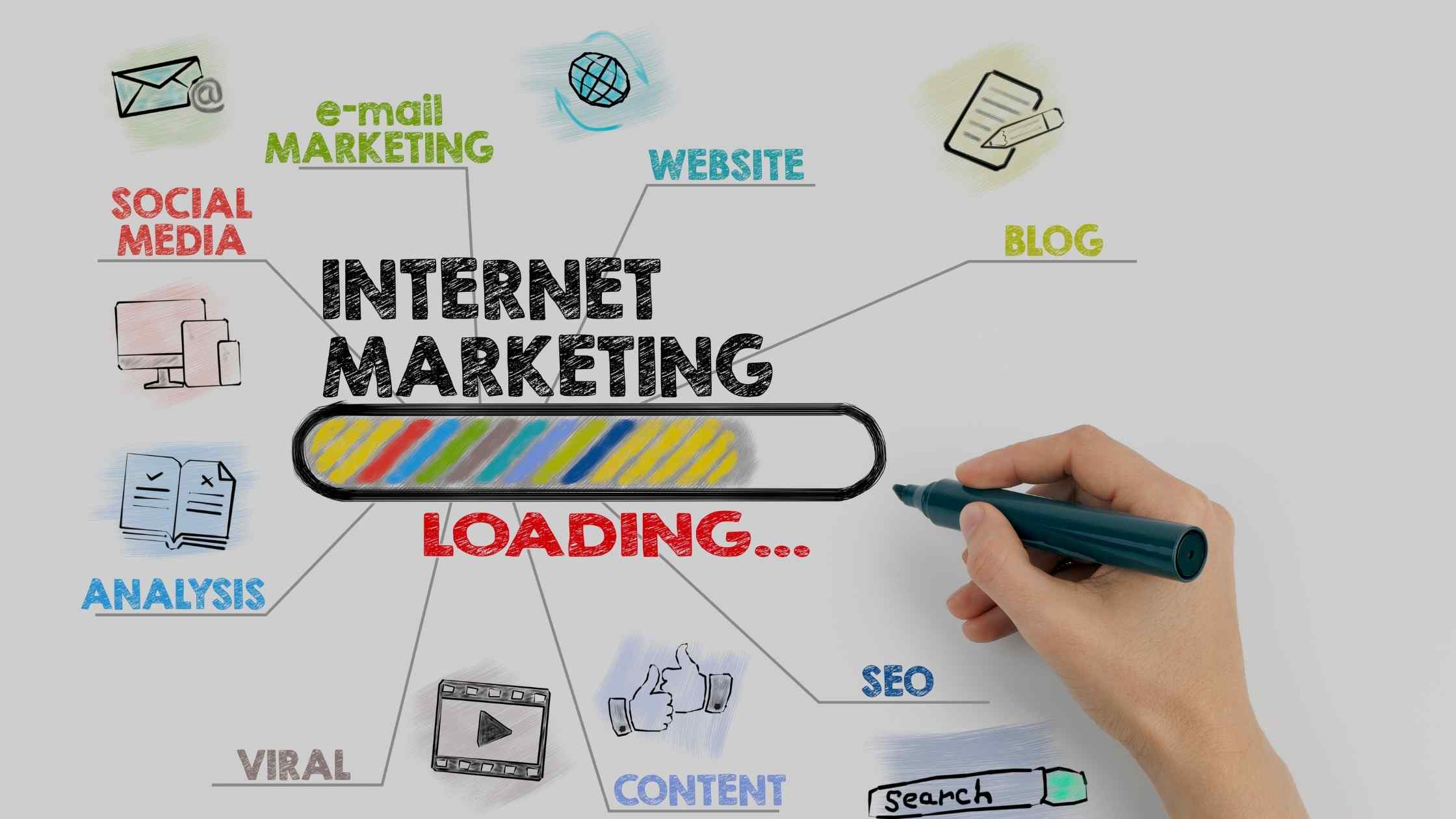The New Rules of Internet Marketing
The New Rules of Internet Marketing in an era where digital landscapes evolve at breakneck speed, the old playbook simply doesn’t cut it anymore. Brands and marketers must adapt or risk fading into obscurity. Welcome to the world governed by the new rules internet marketing, where agility, authenticity, and innovation reign supreme. This comprehensive guide unpacks the transformation of internet marketing and outlines the essential principles needed to thrive in this dynamic ecosystem.

Why the Rules Have Changed
Internet marketing once revolved around straightforward tactics: keyword stuffing, banner ads, and mass email blasts. Today, those strategies often do more harm than good. Consumer behaviors have shifted drastically; the rise of mobile technology, social media dominance, and increased privacy concerns mean marketers must recalibrate their approaches.
The new rules internet marketing reflect this paradigm shift. The focus is on creating genuine connections, providing value, and delivering seamless user experiences. Simply broadcasting messages isn’t enough anymore. It’s about engagement, relevance, and respect.
Rule 1: Prioritize User Experience Above All
Gone are the days when flashy designs and clickbait headlines guaranteed success. Now, user experience (UX) is paramount. Websites must load quickly, navigate intuitively, and adapt flawlessly to all devices. The average consumer expects smooth, effortless interactions — no patience for clunky interfaces or slow-loading pages.
Moreover, UX extends beyond just site design. It encompasses content relevance, accessibility, and personalized journeys. Brands that optimize every touchpoint nurture trust and encourage repeat engagement.
Rule 2: Embrace Data-Driven Decision Making
The new rules internet marketing emphasize leveraging data with surgical precision. Marketing analytics provide an abundance of information—from visitor behavior to conversion funnels. The key is not just gathering data but interpreting it wisely to refine strategies continually.
Deploy tools like Google Analytics, heat maps, and customer relationship management (CRM) systems to uncover patterns. Predictive analytics also play a growing role, allowing marketers to anticipate customer needs before they even arise.
Rule 3: Content Is Still King, but Context Is Queen
Content marketing remains the cornerstone of effective internet marketing, yet the context in which content is delivered has become equally important. Instead of bombarding audiences with generic material, brands now tailor messages to specific segments, channels, and moments.
The new rules internet marketing encourage creating content that resonates deeply—whether that’s educational blog posts, entertaining videos, or interactive infographics. Leveraging storytelling and emotional appeal differentiates brands in saturated markets.
Rule 4: Authenticity Outshines Perfection
Modern consumers are savvy and skeptical. Over-polished ads or hollow slogans fail to inspire loyalty. Instead, authenticity fuels connection. Showcasing real people, transparent business practices, and genuine values cultivates credibility.
Influencer marketing embodies this shift when done right—selecting partners whose voices align sincerely with your brand rather than chasing vanity metrics. User-generated content also thrives as a beacon of authenticity.
Rule 5: Personalization Is No Longer Optional
In the age of information overload, generic messaging falls flat. Personalization elevates relevance and engagement. The new rules internet marketing demand leveraging data to deliver tailored experiences at scale.
Segment email lists by behavior, customize website recommendations, and employ dynamic ad targeting. Even chatbots can be programmed to handle individualized interactions, making consumers feel seen and valued.
Rule 6: Mobile-First Isn’t Just a Trend—it’s a Mandate
Mobile devices now dominate internet access globally. Designing for mobile isn’t a secondary consideration; it’s a prerequisite. Responsive layouts, touch-friendly interfaces, and mobile-optimized content are critical.
Search engines prioritize mobile indexing, making mobile performance a significant ranking factor. Brands ignoring mobile risk alienating a vast portion of their audience.
Rule 7: Video Reigns Supreme
Video content commands unparalleled engagement. From short-form clips on TikTok to in-depth YouTube tutorials, video serves diverse marketing objectives—brand awareness, education, entertainment, and conversion.
Integrating video into your strategy aligns perfectly with the new rules internet marketing. It fosters emotional connections, boosts SEO, and accommodates varied learning preferences. Live streams and webinars further deepen audience interaction.
Rule 8: Privacy and Compliance Are Non-Negotiable
With rising awareness and regulation around data privacy, respecting consumer rights is essential. Regulations like GDPR and CCPA enforce strict data protection standards.
The new rules internet marketing mandate transparent data collection practices, clear opt-ins, and secure storage. Privacy-conscious brands build trust and avoid costly penalties.
Rule 9: Social Media is an Ecosystem, Not Just a Broadcast Channel
Social media platforms have matured into complex ecosystems. Successful marketing requires engaging audiences through conversation, community-building, and responsive support.
Automated posts alone won’t cut it. The new rules internet marketing promote fostering meaningful relationships by listening actively, responding authentically, and providing consistent value.
Rule 10: Agility and Experimentation Drive Growth
The digital realm evolves rapidly. Sticking rigidly to one plan can stifle innovation. Instead, agile methodologies, rapid experimentation, and iterative improvements characterize the new rules internet marketing.
Marketers are encouraged to A/B test campaigns, pivot quickly based on performance data, and embrace new technologies. This mindset keeps brands ahead of trends and competitors.
Implementing the New Rules: A Strategic Roadmap
Step 1: Conduct a Comprehensive Audit
Evaluate your current marketing landscape. Identify strengths, weaknesses, and compliance gaps. Assess your website’s UX, content quality, SEO status, and social presence.
Step 2: Define Clear, Customer-Centric Objectives
Set goals aligned with customer needs and business priorities. Use KPIs to measure progress and ensure accountability.
Step 3: Revamp Content Strategy with Context and Personalization
Develop content tailored to specific buyer personas and stages in the customer journey. Use data to refine messaging and formats.
Step 4: Optimize for Mobile and Speed
Implement responsive design and performance enhancements. Prioritize mobile testing before launch.
Step 5: Embed Analytics and Feedback Loops
Create dashboards and reports for ongoing monitoring. Establish mechanisms for customer feedback through surveys or social listening.
Step 6: Foster Community and Engagement
Cultivate social media interactions beyond broadcasting. Encourage user-generated content, facilitate discussions, and offer exclusive experiences.
Step 7: Stay Updated on Privacy Laws and Ethical Marketing
Regularly review compliance measures. Educate teams on responsible data handling and transparent communication.
Future-Proofing Your Strategy
The new rules internet marketing are not static—they will continue to evolve alongside technology and consumer expectations. Emerging trends such as AI-driven personalization, augmented reality experiences, and blockchain-based transparency will further redefine digital marketing paradigms.
Marketers who remain curious, adaptable, and customer-obsessed will flourish. Investing in continuous learning and innovation safeguards relevance and amplifies impact.
Adhering to the new rules internet marketing is both a challenge and an opportunity. By focusing on authentic connections, data-informed strategies, and seamless user experiences, brands can navigate the complexities of the modern digital world with confidence. The key lies in embracing change, respecting customers, and delivering value at every touchpoint. This approach transforms marketing from a transactional endeavor into a lasting relationship—one that drives sustainable growth and meaningful brand equity.







